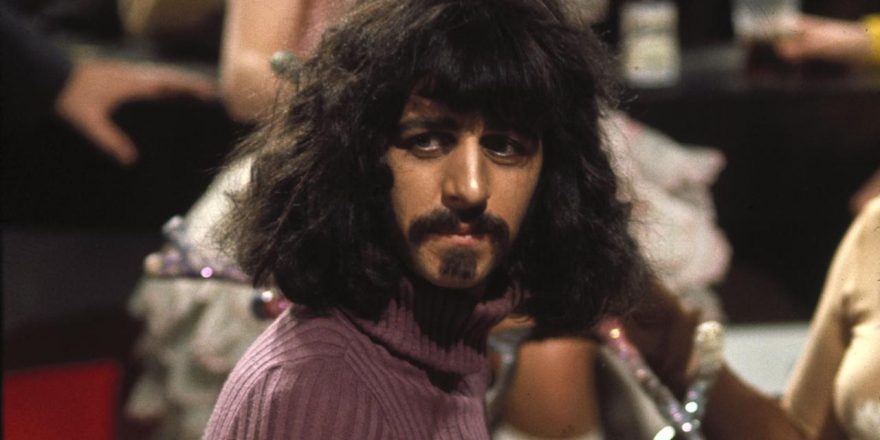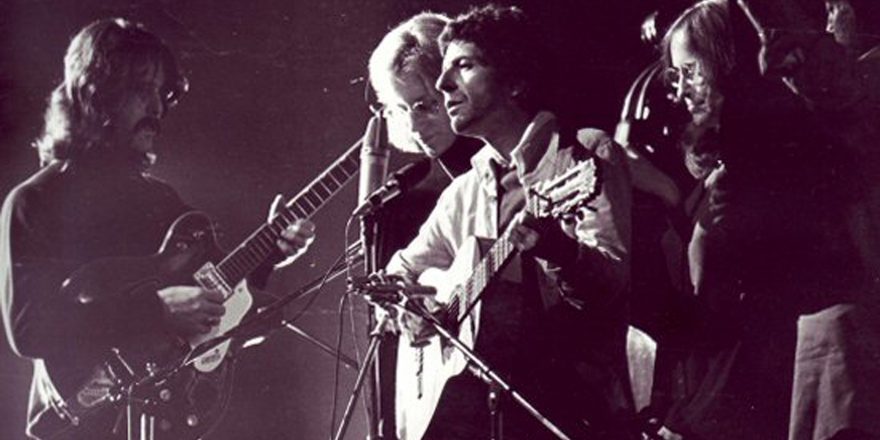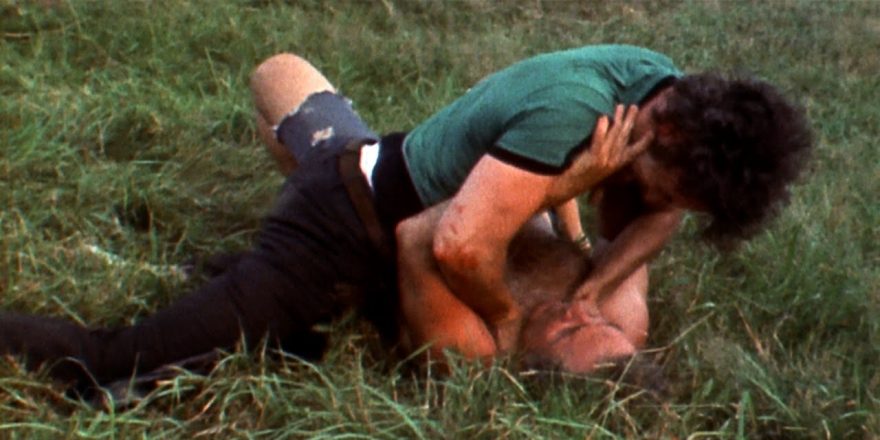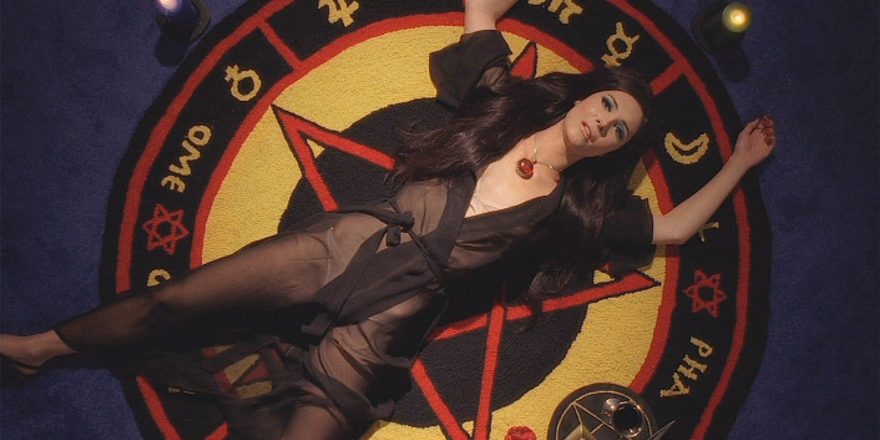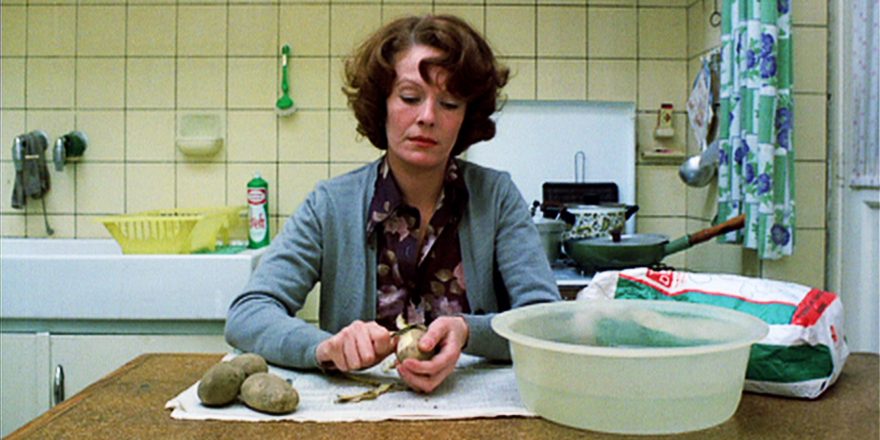On the wall of my office in front of me is a plaque headed “The Six Stages of Production.” It reads:
1. Wild Enthusiasm
I first met Frank Zappa in a dingy basement in New York’s Greenwich Village in January 1968. Wiry, with a black goatee beard and wild black eyes, he was determined to make me understand that rock & roll was not what it seemed, indeed was so pathetically misrepresented by the media of the day that its social and political aspirations had gotten drowned in a bathtub of frothy coffee.
The film I made which he partly inspired, All My Loving, aired on British television in October that year, but was considered so controversial (“harmful to youth,” I was told) that it was first shown after television for the day had officially ceased. David Attenborough, then Director of Programmes for BBC Television, wrote an internal memo stating that the film would be broadcast “over his dead body.” Fortunately, neither half of his assertion turned out to be true.
Two years later, Zappa called me to say he had been “impressed by the courage of my film” and asked if I would be interested in helping with a project of his own. I think by “courage,” he meant that I had given airtime to Hendrix, the Who, Cream and Eric Burdon, not to mention Zappa and his group The Mothers of Invention, all formidable musicians who had previously either not appeared on television, or else been ridiculed. My film, he said, had treated them and many others with seriousness, both musically and culturally. What was the project?
2. Total Confusion
When we met, he gave me “the script” of his project – 300 pages, some handwritten, some paste-ups, some incomprehensible, a few lyrics, and a frequent use of the word “penis.” Ah, I said. He wanted me to “visualize” it, he said. Ah, I said. To create the atmosphere of life on the road of a touring rock & roll band. Ah, I said. When do we shoot, I asked? In a month’s time, he said. Do we have a cast, I asked? No, he said, apart from various musicians from his band including Mark Volman and Howard Kaylan, also known as the Turtles. The cast, he said, that’s your job. Ah, I said. The opening line on page 1 of “the script” read: “If you were forced by a crazy person to insert a mysterious imported lamp into the reproductive orifice of a lady harpist, would you do it?” Ah.
I later discovered something of what had happened up to that point. Zappa had approached his record company, United Artists Records, to persuade their parent company, United Artists Films, to finance a feature film to be called 200 Motels, about the trials and tribulations and misery (and sex) of life on the road – groupies, boredom, drugs, boredom, crappy motels, boredom, and … boredom. Songs would include “Half a Dozen Provocative Squats,” “Shove It Right In,” “Dental Hygiene Dilemma,” “A Nun Suit Painted on Some Old Boxes” and … “Penis Dimension.” Not surprisingly, United Artists had … hesitated. Zappa then said he would use his next record advance to finance the film if UA would agree to distribute. OK, they said, but we need a “safe pair of hands” whom they knew to direct. Enter Muggins, and a production company was formed called, what else? Bizarre Productions.
3. Utter Despair
On the positive side, I knew that Pinewood Studios had been booked (for 10 days, a little short for a feature film) and that Zappa was no mug as a musician. His lyrics might be full of absurd provocations, not to say squats, but having studied with Varèse, he was eminently capable of writing in full score, or at least filling the pages with a great number of dots and squiggles which, whether they added up to anything more than the sums of their parts, remained a matter of debate. Anyhow, they needed an orchestra. Your job, he said.
So the Royal Philharmonic, with whom I had worked before, was volunteered, although somehow I failed to mention to them that they would be seen throughout the film in a prison camp called “The Centerville Recreational Facility,” with the percussionists dressed as Nazi guards. But it was Pinewood Studios, I kept repeating. They were mightily impressed by that. As was a brilliant trumpet player and brass band conductor I had come across called Gary Howarth, today a most distinguished orchestral conductor called Elgar Howarth. Zappa wanted “serious” musicians involved, he said; enter John Williams, the great classical guitarist. There was to be “dancing”; enter Gillian Lynne, another old friend, later to become rich as the choreographer of the original production of Cats. I called up every crazy rock & roller I could think of who owed me a favor; enter Ringo Starr (disguised in the film as Frank Zappa) and Keith Moon, the drummer with the Who. Zappa’s score required a choir; enter the Monteverdi Choir, although they have always denied they had anything whatsoever to do with it, partly through fear of what Sir John Eliot Gardiner might do to them if he ever found out. We need class actors, Zappa told me; enter Wilfred Brambell (best known as Harold Steptoe in Steptoe and Son) and Theodore Bikel, sometime folk singer and Captain von Trapp in the original stage production of The Sound of Music. Wow! He was to play Rance Muhammitz disguised as a TV announcer named Dave. You work it out. The problem was there was no real script I could give them.
4. Search for the Guilty
Now comes the interesting part. Zappa’s idea – to portray what life was really like on the road – was a good one. Having survived several rock & roll tours myself, with Hendrix, Led Zeppelin, Uriah Heep and others, I knew that the madness which shook the headlines – “Group trashes hotel with motorbikes” or “Group floods dining room with broken beer bottles” – was only half the story. The physical slog of night after night, in venues (especially in the States) hundreds of miles apart, in rubbishy motels, with dysfunctional equipment, little or no time for sound checks, screaming jail bait all over you, thieves and hoodlums frequently stealing the group’s instruments hours before a gig but “offering” to find them again for a not inconsiderable fee (or should that be ransom), this was the real half of the story, and went some way to explain the consolations of sex and drugs. Zappa’s ambition was to write this large upon the silver screen.
But how to do that, and at very short notice, and with a budget that today wouldn’t even pay for the wigs? 35mm film was out, economically, and there simply wouldn’t be time. I told Zappa the only hope was to try and shoot it on color video. He was skeptical; United Artists were not to be told. I was sure they would cancel the whole thing at the very mention of the word “video” and blame … me. My view, however, was that video was relatively quick, cheap and, most important of all, it might give us the chance to experiment with the technology which, although in its infancy – some would have said pre-infancy – seemed to me to have possibilities. If it failed, well, Zappa could always blame … me.
But, I argued, Zappa wanted to show, visually, the effect for instance of hallucinatory drugs. To achieve this optically, by film, was of course possible, but it would be exceedingly slow, and expensive, and then might not result in something sufficiently bizarre. It should be remembered that this was more than four decades ago, when the wonders of Industrial Light & Magic were unknown and Peter Jackson was still in the cradle. Digital pictures and Jurassic Park were still in a galaxy far far away and not even heading in our direction.
5. Persecution of the Innocent
There was a second problem, or rather set of problems. Once we had our color video tape, could we edit it? Don’t forget that the first analogue color video recorder (of 2” tape, long ago abandoned as a format) had only arrived in the BBC in late 1968, and although it could in theory be edited by physically cutting the tape with a splicer and then sticking the bits together with sellotape, the edit could not be guaranteed. Sometimes it would play, sometimes it wouldn’t. Given the complexity of the 10-day shoot, editing was going to be essential; it would have been impossible to record the estimated 90 minutes as if “live.” In any case, there were only a tiny number of cinemas equipped to show videotape on a large screen.
Therefore, somehow the unedited tape had to be transferred to film. Obvious, but it had never been done before. Some black-and-white television had been telerecorded on 16mm film, but the quality was poor and would never stand up to examination on the big screen. Laser scanning, nowadays an essential tool of the trade, was not even a flicker in the imagination of George Lucas. By an incredible chance, I was grumbling about this latest problem with a friend who worked at Technicolor. Simple, he said. Remember that the television picture has three color signals, red, blue and green. Well, so does the old 3-strip Technicolor method of negative and print. Incredibly again, he found an old disused Technicolor printer, and if we could find a way to isolate the three television signals he said, bingo, we could transfer everything to 3-strip 35mm film and thus solve the editing and distribution problems.
Incredibly, it worked, and if the finished film has any merit, it is precisely this: it showed the way forward for more or less every special effects film which followed. Of course, today’s digital wonders are as related to 200 Motels as a supersonic jet is to Leonardo’s flying machine. But at the time we all believed we had seen the future, and it worked. How innocent we were.
6. Promotion of the Incompetent
Zappa frequently remarked during the frenzied 10 days shooting in Pinewood that he felt truly humbled to sit in the dining room surrounded by the photos and memories of the many great films that had been made in these studios. He’s dead now, but I would want to suggest that he too made a small contribution to the pioneering spirit that has always been the hallmark of Pinewood. A few years later I met David Lean, a true Pinewood veteran. Whereas I wanted to ask him about Lawrence of Arabia and the rest, all he wanted to talk about was 200 Motels and how it had been done. Astonishing to me that he had seen it all; but that too was a truly humbling experience.
Two footnotes: sometime in the mid ’90s I was in Westwood in Los Angeles. I happen to pass by a tiny cinema which probably only held six men and a dog. There on the billboard it said: “200 Motels, now in its 20th year. Rated R.” Lurch back now for the second footnote to the mid-70s. Zappa had wanted to perform 200 Motels at the Royal Albert Hall. The performance had been cancelled at short notice by the management of the hall because, they said, of the obscene nature of the content. Zappa had sued the management for breach of contract, and the matter had finished up in the High Court. I had been called as a so-called expert witness. Did I really think that a piece which included “homosexual material” was suitable for performance in the home of the Proms, the Judge asked me? It so happened that Britten’s great opera Death in Venice had been performed the previous year in the Proms. When I mentioned this, the Judge said: and who wrote that? Benjamin Britten, I replied. And how do you spell that, the judge asked?



